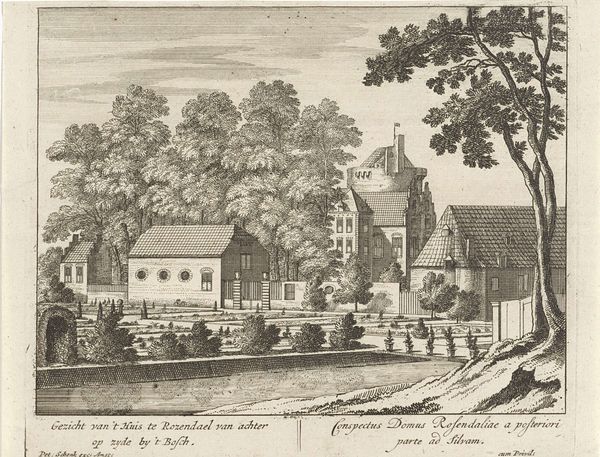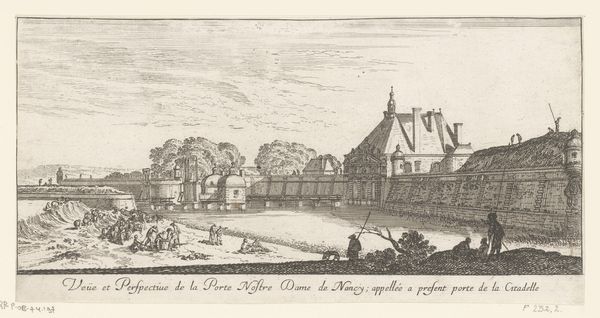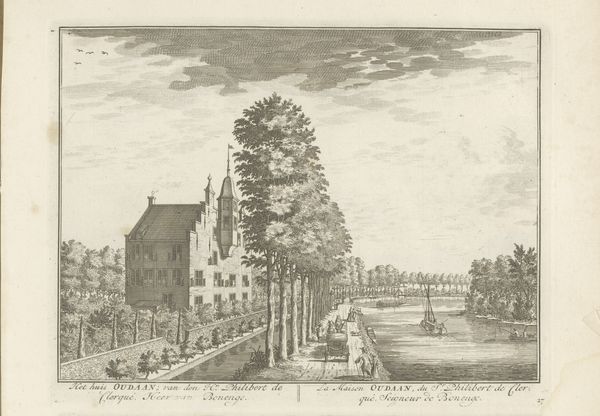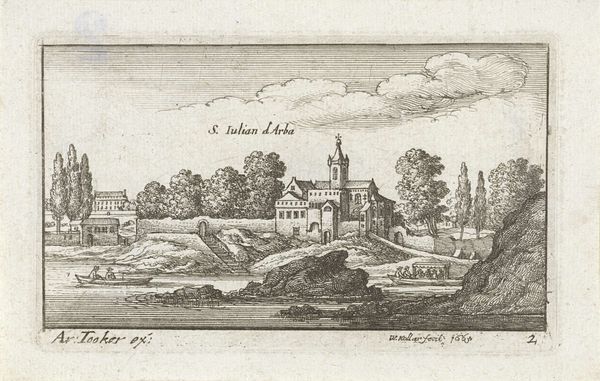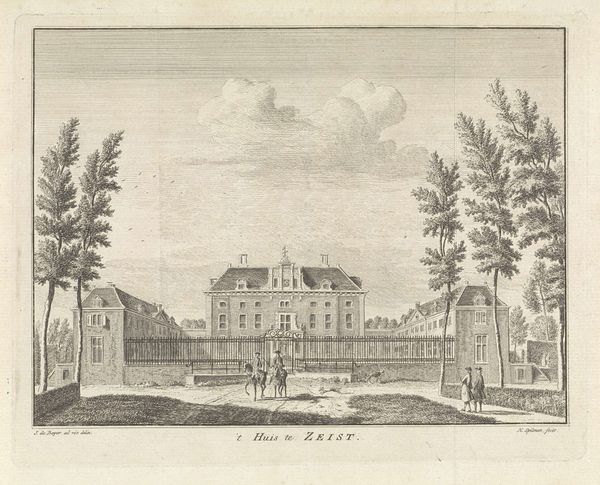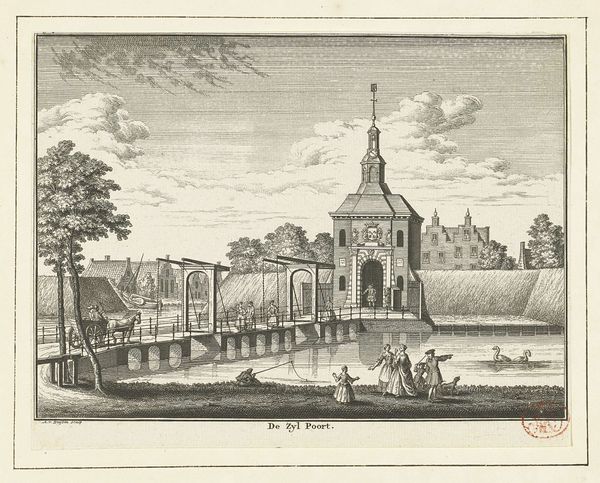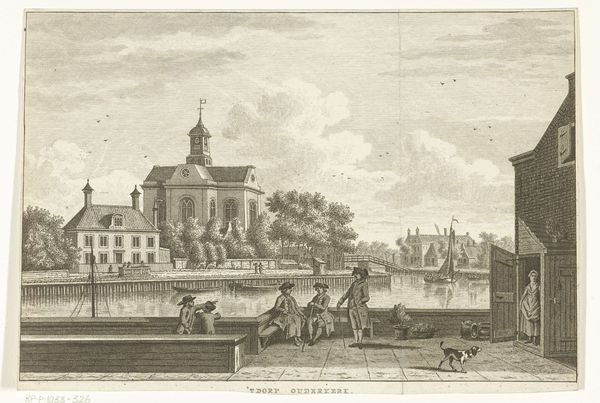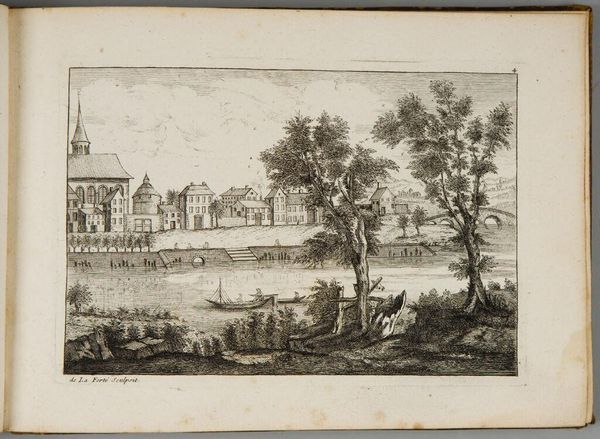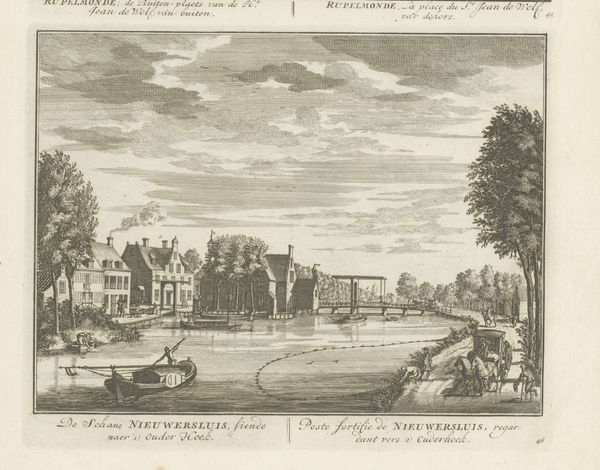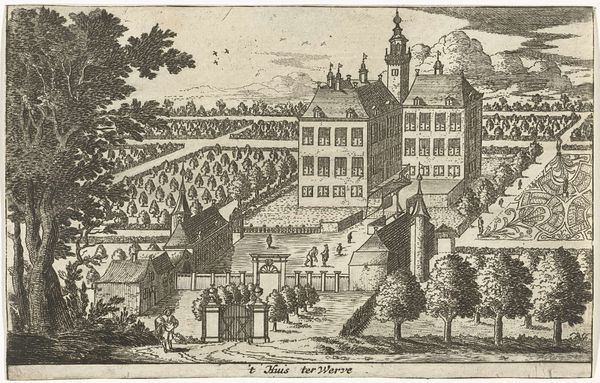
print, etching, engraving
#
baroque
# print
#
etching
#
landscape
#
engraving
Dimensions: height 89 mm, width 171 mm
Copyright: Rijks Museum: Open Domain
Editor: This is “Tuin van het huis te Issy,” or “Garden of the House at Issy,” an etching and engraving by Albert Flamen, likely created between 1648 and 1692. It depicts a very orderly, manicured garden… almost like a stage set. The precision and detail are remarkable. What's your take on this, especially considering the Baroque style? Curator: Ah, yes! Isn’t it captivating? Flamen's engraving pulls us into a world carefully curated, a space where nature submits to the will of humankind. The precise lines, the theatrical framing... I always wonder what conversations echoed through these gardens, what intrigues blossomed alongside the carefully arranged flowerbeds. What stories do *you* imagine unfolded here? Editor: It feels very controlled, maybe even a little… distant. It's pretty but doesn't exactly feel inviting, more like something to be observed than experienced. I can see how the landscape fits the formal aesthetic of the era, though! Curator: Precisely! And there's a beautiful tension here. Notice how the seemingly 'perfect' composition also has this rawness - almost childlike- within the etching technique. See that flurry of clouds? To me, it whispers that even in the most sculpted of environments, the wild heart of nature continues. Editor: I see what you mean! So it's like the print is trying to say that, beneath the surface, nature can’t ever *really* be tamed? That's really different than what I initially thought. Thanks for pointing that out! Curator: Exactly! And perhaps that’s a beautiful metaphor for life itself, wouldn’t you agree? It always feels as if we, too, can create order only to be confronted with unpredictable chaos at any turn. Editor: That’s something I’ll think about for sure. Looking closely has opened a new dimension to what I had first thought was a simply quaint print.
Comments
No comments
Be the first to comment and join the conversation on the ultimate creative platform.
